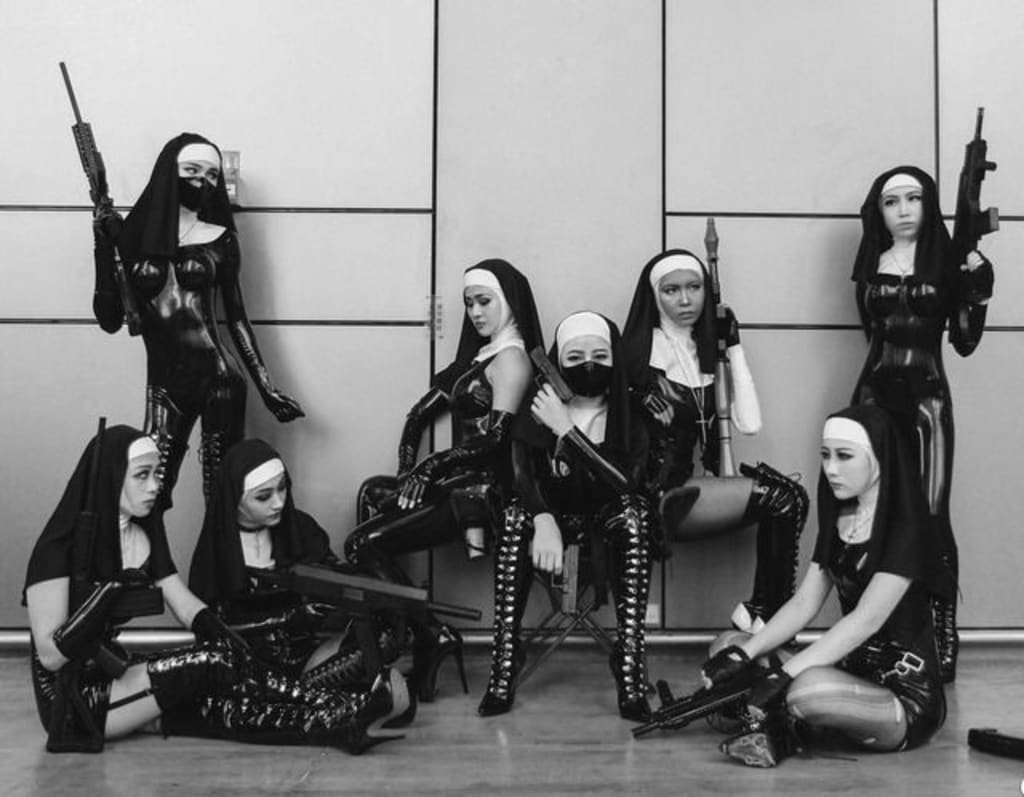Content warning
This story may contain sensitive material or discuss topics that some readers may find distressing. Reader discretion is advised. The views and opinions expressed in this story are those of the author and do not necessarily reflect the official policy or position of Vocal.
Women in the Mafia: The Hidden Figures of Organized Crime
Unveiling the Significant yet Overlooked Roles of Women in Organized Crime

Introduction
When thinking of organized crime, the image that typically comes to mind is a male-dominated world of ruthless bosses, violent enforcers, and cunning lieutenants. However, behind this facade of machismo and violence lies the often overlooked but equally compelling stories of women in the mafia. These women, while frequently relegated to the shadows, have played crucial roles in the operations, structure, and survival of criminal organizations. This article delves into the hidden figures of organized crime, exploring the multifaceted roles women have played in the mafia, their influence, and the challenges they face within this clandestine world.
Historical Context: Women’s Early Involvement in the Mafia
Traditionally, organized crime groups, such as the Sicilian Mafia, the American Cosa Nostra, and the Mexican drug cartels, have been patriarchal organizations. Women’s roles were often limited by cultural norms and the strict codes of conduct that governed these groups. However, even within these constraints, women found ways to assert their influence.
In the early days of the Sicilian Mafia, women were often involved indirectly. They managed households, handled finances, and maintained the social fabric of mafia families. Despite being excluded from formal positions of power, their contributions were vital to the stability and continuity of the organization. Women also played key roles in passing on the mafia’s values and traditions to the next generation, ensuring the perpetuation of the criminal code.
Influential Women in Organized Crime
While many women operated behind the scenes, some emerged as influential figures within their respective organizations. One notable example is Maria Licciardi, a prominent leader in the Neapolitan Camorra. Licciardi rose to power in the 1990s and was known for her intelligence and strategic thinking. She restructured the organization, focusing on more profitable and less risky criminal activities, such as drug trafficking and prostitution. Licciardi’s leadership marked a significant shift in the Camorra, demonstrating the potential for women to hold powerful positions within the mafia.
In Colombia, Griselda Blanco, known as the “Black Widow,” became one of the most feared and powerful figures in the Medellín Cartel. Blanco was involved in large-scale cocaine trafficking operations in the 1970s and 1980s and was known for her ruthless tactics. Her ability to navigate the dangerous world of drug trafficking and establish a vast criminal network highlighted the significant, albeit often violent, roles women could play in organized crime.
Roles and Responsibilities: Beyond the Stereotypes
Women in the mafia often take on diverse roles that go beyond the stereotypical image of the mafia wife or mistress. They serve as intermediaries, negotiators, financial managers, and sometimes even enforcers. Their involvement can range from logistical support to direct participation in criminal activities.
One of the primary roles women play is that of the messenger or intermediary. Women are often used to convey messages between male members, especially during times of heightened law enforcement scrutiny. Their perceived non-threatening presence allows them to move information and goods more freely. Additionally, women often manage the financial aspects of the organization, laundering money, and maintaining the books to ensure the smooth operation of criminal enterprises.
Women also participate in intelligence gathering and surveillance. Their ability to blend into various social settings makes them valuable assets in monitoring law enforcement activities or rival gangs. In some cases, women have been known to engage directly in violent acts, though this is less common. When they do, their actions are often driven by loyalty to family or the organization, or by personal ambition.
Challenges and Risks: The Double Burden
Despite their significant contributions, women in the mafia face unique challenges and risks. The patriarchal structure of these organizations often limits their upward mobility and subjects them to the whims of their male counterparts. They are frequently tasked with maintaining family loyalty and ensuring the organization’s secrecy while managing their domestic responsibilities.
The legal risks for women in the mafia are also substantial. While they may not be as prominently targeted by law enforcement as their male counterparts, they are still vulnerable to arrest and prosecution. When apprehended, women often face harsh penalties, especially if they are seen as having taken on leadership roles or participated directly in criminal activities.
Moreover, women in organized crime often carry a double burden. They must navigate the dangers of the criminal world while also dealing with societal stigmatization. This duality can lead to isolation and psychological stress, compounded by the constant threat of violence, both from within the organization and from rival groups or law enforcement.
Notable Cases and Modern Implications
Recent years have seen a growing recognition of the roles women play in organized crime, leading to increased scrutiny and arrests. For instance, in 2018, Patrizia Messina Denaro, the sister of infamous Sicilian Mafia boss Matteo Messina Denaro, was arrested for her involvement in the family’s criminal activities. Her arrest underscored the significant, yet often hidden, influence women can wield within the mafia.
In Mexico, women are increasingly visible in drug cartels, both as leaders and foot soldiers. The rise of figures like Sandra Ávila Beltrán, known as the “Queen of the Pacific,” highlights the evolving dynamics of gender within organized crime. Ávila Beltrán was instrumental in coordinating drug trafficking routes between Mexico and the United States, showcasing her strategic acumen and leadership skills.
The involvement of women in organized crime has modern implications for law enforcement and criminal justice systems. Recognizing the roles women play can lead to more effective strategies for disrupting criminal networks. Additionally, understanding the unique challenges and motivations of women in the mafia can inform rehabilitation and reintegration efforts, helping those who wish to leave the criminal life behind.
Conclusion
Women in the mafia are the hidden figures of organized crime, playing crucial roles that often go unrecognized. Their contributions, whether in support or leadership positions, are vital to the operations and survival of these criminal organizations. While they face significant challenges and risks, their stories reveal the complexity and depth of the mafia world.
As society continues to grapple with the realities of organized crime, acknowledging the roles of women is essential. Their involvement not only sheds light on the inner workings of these clandestine organizations but also challenges the traditional narratives of gender and power within the criminal underworld. By understanding and addressing the unique experiences of women in the mafia, we can better combat the pervasive influence of organized crime and support those seeking a way out of its grasp.
About the Creator
Kobra
"Enter the dark and twisted world of the unknown I lead you through the shadows on a journey into the depths of the unknown."
"Uncovering darkness"
Enjoyed the story? Support the Creator.
Subscribe for free to receive all their stories in your feed. You could also pledge your support or give them a one-off tip, letting them know you appreciate their work.






Comments
There are no comments for this story
Be the first to respond and start the conversation.